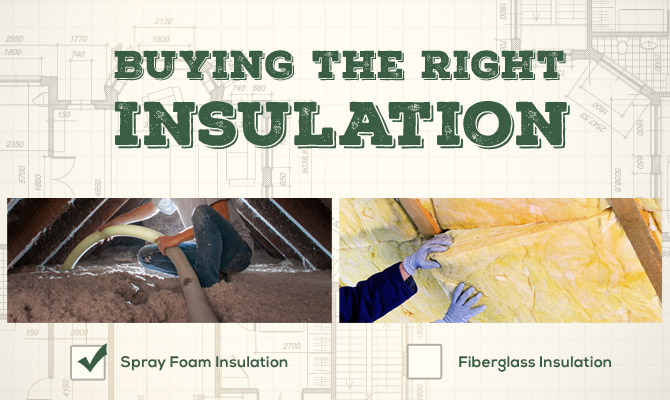
Properly insulating your home is one of the keys to maximizing your home’s energy efficiency and keeping your utility bills as low as possible. There are several things to consider when it comes to insulating your home such as climate, home design, and budget.
Having a properly insulated home improves the comfort of your home by slowing down the movement of heat throughout your home. In warmer climates, like Florida’s, proper insulation can slow down the rate at which hot air from outside enters an air-conditioned home.
In this post, we’ll discuss the pros and cons of the two most popular types of insulation: spray foam and fiberglass.
Spray Foam Insulation
Spray foam insulation is one of the most efficient types of insulation on the market. It has been known to provide energy savings of 50% while other types of insulation offer a savings of just 30%.
Pros of Using Spray Foam Insulation
- It expands up to 100 times its original size to fill in all gaps for a tight seal. This keeps the cool air in and the hot air out.
- It helps reduce the amount of dust and allergens entering your home, protecting your family from allergies and improving the overall air quality of your home.
- It doesn’t provide a source of food or nesting materials for termites or rodents.
- It’s good for soundproofing and noise control.
Cons of Using Spray Foam Insulation
- It’s difficult to install. Some installers spray areas too thick and other areas so thin that you can see the wood underneath. Spray foam is only effective if installed evenly.
- Insulation is mixed on-site and the quality depends on the applicator’s skill, the equipment used, temperature, and humidity.
- Some homeowners have claimed it has a strong scent that lingers long after it should have cured.
- It’s quite expensive in comparison to other insulation types.
- Spray foam is much more complicated to install than fiberglass insulation and calls for an experienced installer.
Fiberglass Insulation
Fiberglass is made from spun glass or glass fiber which has millions of tiny air pockets that actually slow down the movement of heat.
Fiberglass Insulation typically comes in two different forms – pre-cut batts and blown-in. It’s the most cost-effective insulation solution, providing the same thermal resistance as spray foam and cellulose, but at a much lower cost.
Pros of Fiberglass Insulation
- It’s very budget friendly.
- It’s easy to install, although we recommend using a professional to ensure proper installation.
- Fiberglass insulation is made out of recycled glass and sand, so if it’s under direct flame it will melt, not burn.
- Additional amounts can be added at specific places to make up for other areas with lower thermal values such as doors and windows.
- It’s great for soundproofing.
Cons of Fiberglass Insulation
- Air can easily flow in and out, creating higher cooling costs.
- It’s difficult to install perfectly so there are many gaps. Gaps can be the size of a basketball, which would leak enough air each day to fill two air blimps.
- It retains water which could lead to structural damage to your home or contribute to mold growth. If fiberglass insulation does happen to get wet, installers should be called to inspect it on all sides and dry it completely.
- It can be dusty and can allow allergens to enter your home.
- Fiberglass insulation material is often torn apart by pests for nesting purposes.
If you would like to learn more about insulation, or how energy efficient your home is, give Wattson Home Solutions a call at (855) 928-8123 or schedule an energy assessment now.







